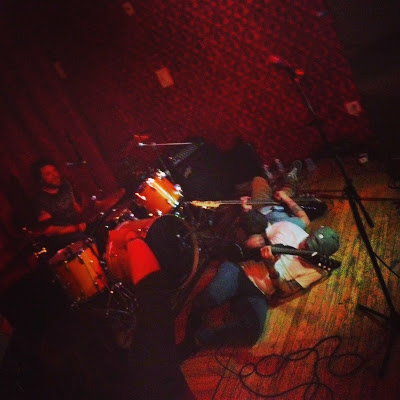
[Two Cow Garage at Radio, Somerville, MA 1/26/2013. Photo by Michael Piantigini.]
Two Cow Garage: Intertubes | Facebook | Twitter
news, reviews and opinion since 2001 | online at clickyclickymusic.com | "you're keeping some dark secrets, but you talk in your sleep." -- j.f.

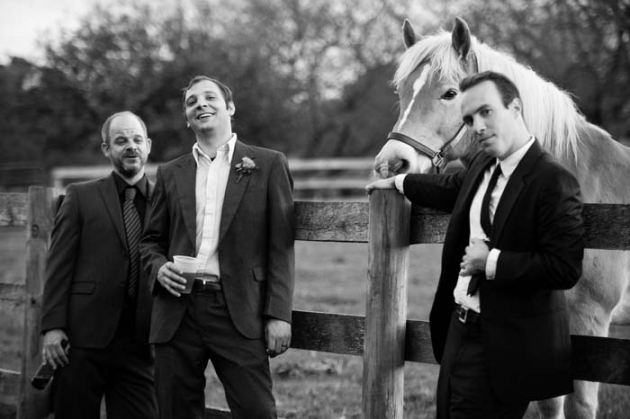
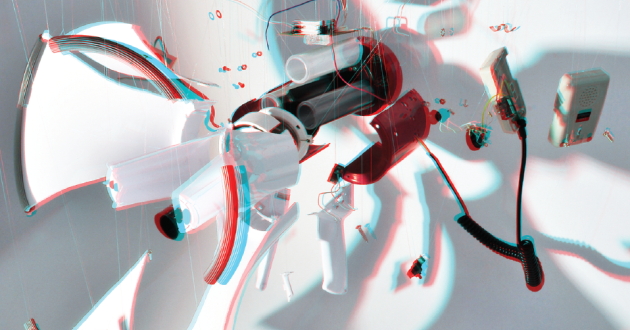
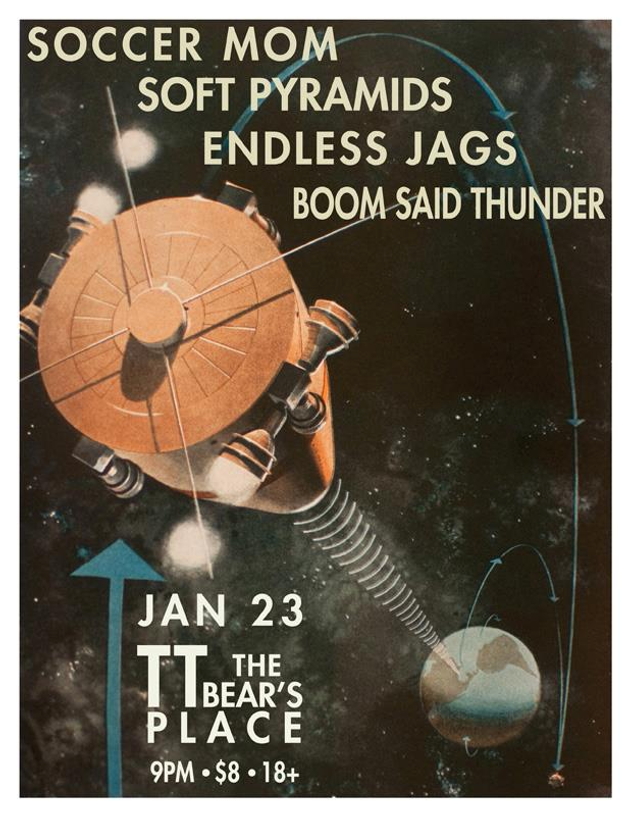
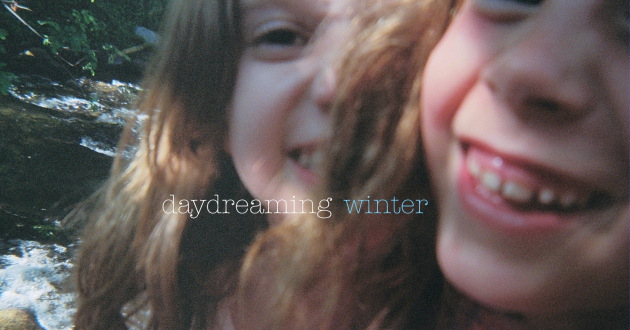

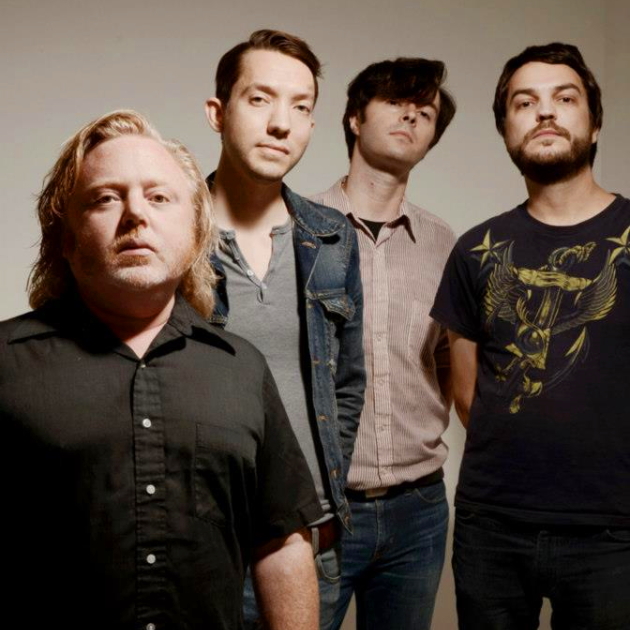
Clicky Clicky: Russell, thanks for chatting with us.She, Sir: Bandcamp | Facebook | Internet | YouTube
Russell Karloff: Yeah, no problem. We're really excited about the new stuff we're working on.
CC: We’re really pumped for Go Guitars, and it feels like the She, Sir story so far has been building up to its release. In what ways are you excited about what you're creating now, and how has the inspiration and history of the group factored into it?
RK: Yeah, it certainly does feel like everything's been leading up to this release. It’s like we've just been refining our sound over the years. The first record feels like it adheres to a genre; us being influenced by a handful of bands at the time: My Bloody Valentine, Slowdive, Ride, etc. With that first record, we ended up walking out of the studio with a pretty original sound, but it wasn't exactly the record we felt ourselves capable of. With our next release, the Yens 7", we switched it up and started reworking our process from the ground up, starting with bringing in a wider range of influences. The result, though a very short 4-song release, felt much more ambitious to us and was closer to the type of sound we'd set out to achieve.
CC: It seems like the new album is taking the results of Yens as a template and expanding on it?
RK: Yeah, exactly. The now nearly finished album keeps with the Yens producer Erik Wofford (Explosions In The Sky, Voxtrot), who we knew could give us the sound we were after. It also continues to refine our writing process in terms of incorporating wider influences. As where Yens was a little lighter, more acoustic in feeling, Go Guitars brings back the dense, heavy guitars we first introduced on Who Can't Say Yes. It's really a blending of everything we've learned over the years. At this point, we're experienced enough to know exactly what it is we want to do, and we finally know how to achieve it.
CC: That's got to be a great feeling.
RK: It's a good place to be. Most of the stuff on those first two releases feels very exploratory to me now as I listen back, but that has resulted in some pretty good songs too!
CC: So, as you were writing and exploring, how did lineup changes occur from Who Can't Say Yes up until now? It appears you now have a larger and more consistent lineup than in the past, at least based on the latest band photos.
RK: A lot of people don't know this, but M. Grusha and I recorded an entire She, Sir EP up in Minneapolis about a year before Who Can't Say Yes was recorded. We had the great fortune to work with Christopher McGuire (John Vanderslice, The Mountain Goats), who was our drummer at the time. This was a great learning experience for us, in terms of learning about what we wanted out of the recording process, and what we wanted when working with other musicians. The album was ultimately scrapped because of production concerns, as we weren't getting the type of sound we wanted. We learned early on to be insistent with the sound you want and to be specific in what you require from the musicians you surround yourself with.
Anyway, we ended up moving to Texas later that year and starting over from scratch with a new EP, with new songs. We met Rick and James Vehslage (guitar and drums on Who Can't Say Yes) soon after arriving in town and they really helped us get the sound we wanted. We hit it off and before we knew it we were recording most of that record in their living room. Actually, it was about this time we first conceived the Go Guitars full-length. For so many different reasons, ranging from bad luck to pure idiocy, we had a bunch of lineup changes throughout the next few years. Mostly Grusha and I used this time to rework and refine our sound, getting closer to what we were after all along. Finally, our good friend Jeremy Cantrell (whose guitar work we'd admired for some time) agreed to join the band and that was the turning point for us. It is important to have a solid core of musicians in a band that have played together and known each other for a long period of time. Soon after, we were pleased to add drummer David Nathan to the group. We've all been playing together for a long time now, and it helps that we're all really good friends.
CC: Nice to hear that it's leveled out. We wanted to focus some on the She, Sir composing process and the production aspect of the recordings, which has always been superb. First off, we can remember press for Who Can't Say Yes mentioning you and Grusha's academic background in regards to music. What's the story there? And how did that experience play into what you wanted the band to be?
RK: Grusha and I met in college in a music composition course. There aren't a lot of people interested in that type of thing, so we immediately bonded. In fact, we were both writing classical music -- string quartets, symphony orchestra pieces -- long before either of us ever had the idea of writing pop music. I feel that is a strong difference from where we come from compared to most others. We are interested in things like voice-leading, harmony, structure, and counterpoint. That's where we started out and that's basically still how we approach writing She, Sir songs. The guitars, drums, and vocals format is incidental.
I feel like most pop music, since its inception, has been built around the idea that anyone can understand it. Vocals are in the forefront and the chords of a song are easily delineated. With She, Sir, the music is dense, the chords are ambiguous at best, and the vocals are often low in the mix -- treated as just another instrument at our disposal. We hope the music can be viewed from a distance, judged as a whole, and unable to be easily dissected into components. Really, we feel that shoegaze and Motown records have these qualities in common and are two of our favorite styles.
CC: Is there a normal composing routine for a She, Sir song? We've always had the impression that you guys very careful and deliberately consider every part of the piece. Can we get a peek into that process?
RK: Yeah, that's true. You tend to go with the process that works best for you at the time. Back during Who Can't Say Yes, Grusha or I would usually have about 90% of a song completed in fine detail before showing it to the others to complete it. Sometimes, I'd write something I didn't really feel too strongly about and would come very near to throwing it out, but it would get saved at the last minute by someone else who believed in it.
"It's My Way of Staying Connected" is a good example of that. It wasn't until we got down to Texas, and started playing with Rick and James, that that song was resurrected. The point is, you can never ever assume to know when you've written something good. You have to be open to other people’s input. You have to allow other people to add to and critique songs, even if you've written 100% of it and don't want to change a thing. Other people approach things with fresh ears and must be part of the process. With this in mind, our writing process for Go Guitars has been much more democratic. These days, I often get together with Jeremy or Grusha to go over a rough idea before a song is anywhere near being finished.
I think we've settled into a process similar to what most bands find to be most productive: getting together with a group of people you trust musically in a room filled with instruments. As I said earlier, it is important to have high expectations for the group you're working with... but it is equally important to be flexible and open to new ideas.
CC: She, Sir has maintained a very full, saturated analog sound all along, without the usual trappings. How does the studio factor in to the process? Where's that rich reverb coming from? How much do you invest in amps and guitar pedals?
RK: A lot of bands that get lumped into the shoegaze genre, as we have, accomplish their wall of sound with a ton of pedals and big-sounding amps. For us, it isn't like that at all. While we still care to achieve that big wall of sound, we do it differently. We tend to use only a handful of pedals. Largely, the density of our sound is derived from intricate arrangements. We prefer to layer several instruments together, all doing something unique and contrapuntal, to create a wall of sound as opposed to running one instrument through an array of effects. We also value economy in our recordings. Every detail is deliberate and complementary; you'll never find a part that is needlessly doubled or just big for the sake of size.
Really, the reverb and delay effects are incidental. Again, as I said earlier, we hope our songs can be viewed from a distance, as a whole. Reverb and delay are natural tools that help us blur the lines and achieve this effect. We love a lot of shoegaze bands, but we don't really want to emulate them or their approach. Again, Erik Wofford understands this and has helped us in the studio at every step. It is easy to over-produce or under-produce a band like us, but we've had long conversations about what it is we're after in the studio. When we're in the studio, Erik is just like a member of the band. We bounce ideas off of each other and veto each other. Plus he has a plate reverb the size of most peoples' mattresses.
CC: Favorite guitar tunings?
RK: Who Can't Say Yes has tunings all over the place...EADG#BE, EADG#AE, DADG#AF#. There are a few standard tuning songs, too. Yens is mostly in standard. For Go Guitars, we mainly prefer EADG#BE.
CC: So, with all this leading up to now; what are your favorite things about Go Guitars? What other nuances are you excited for people to hear? The funk inspiration in "Condensedindents" was surprising, but totally natural. What else can we expect to hear on the album?
RK: Mainly we are excited to be working on a full-length release in general. Our previous efforts have been EPs -— either conceived that way or truncated for whatever reason. We've always valued diversity, reach, and overall cohesiveness in our releases. With this full-length, we finally have a format that allows us to really dig in and exposit these ideas. As you said, we're bringing in some deeper rhythm and bass elements. This includes bands like Fleetwood Mac and Prince. We're also really inspired by more recent groups like The Go-Betweens and The Eaves.
CC: Lastly, any tour plans lined up for the album release?
RK: We might put the show on the road at some point around the record release, but for now we're mostly trying to gain interest from labels that may be able to help us with more substantial arrangements in the future. All of our concentration really is on finishing this record. Though we've mostly finished the writing for it, there are about a million things yet to record in the studio.
CC: Well, the blog is looking forward to it. Good luck!
RK: Thanks!
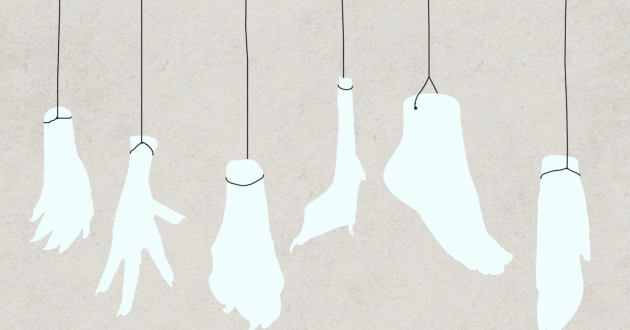

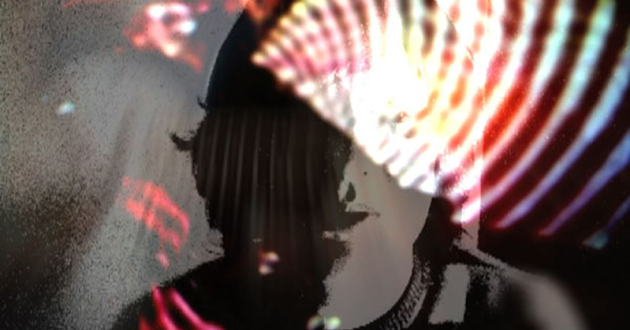

1. The articulated, spectral and somewhat burbling backing vocals and harmonies in "Animals," particularly the chorus. And how the demo just falls off a cliff, as if the tape spun loose from the reel. Well, we just listened again before posting this piece, and it sounds like the MP3 has been fixed/replaced with a more complete take, so scratch that stuff about spectral, burbling, tape spinning loose, etc.
2. More spectral backing vocals on this version of "Night Owls," carving previously unheard melodies, particularly in the song's final moments.
3. The dense wall of electric guitar in the verse of "In This World," the slap-backed harmonies with the lilt at the end of each line, and the unhinged, bending electric guitar as the song emerges from the bridge.
4. The wonderfully overstated metal crunch of the rhythm guitar in "Long Way Home," and the shimmer and waver of the guitars as they fade behind the final cymbal crash.
5. The fun and surprisingly pretty, tossed-off electric guitar leading into the bridge of "Richard's Gone."
6. The gently chorused guitar at the opening of "Galaxies," the crunchy rhythm guitar in the second verse, and the subtle synth line beautifully buttressing the song's final choruses.
7. Deily's voice trailing off at the end of the second line of "Morning."
